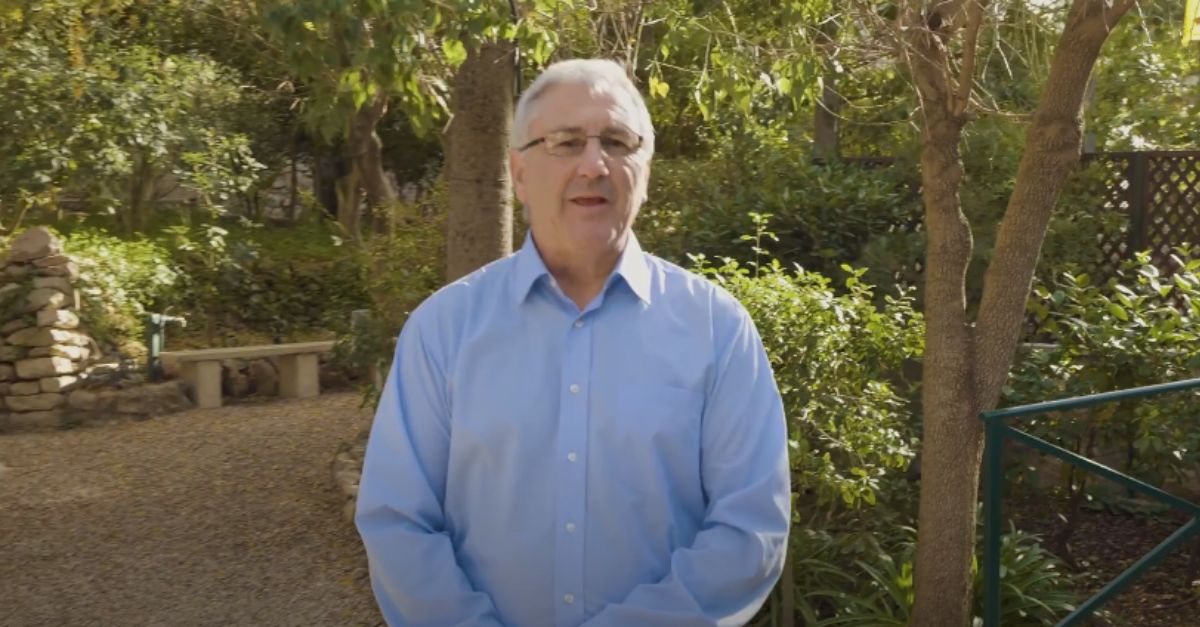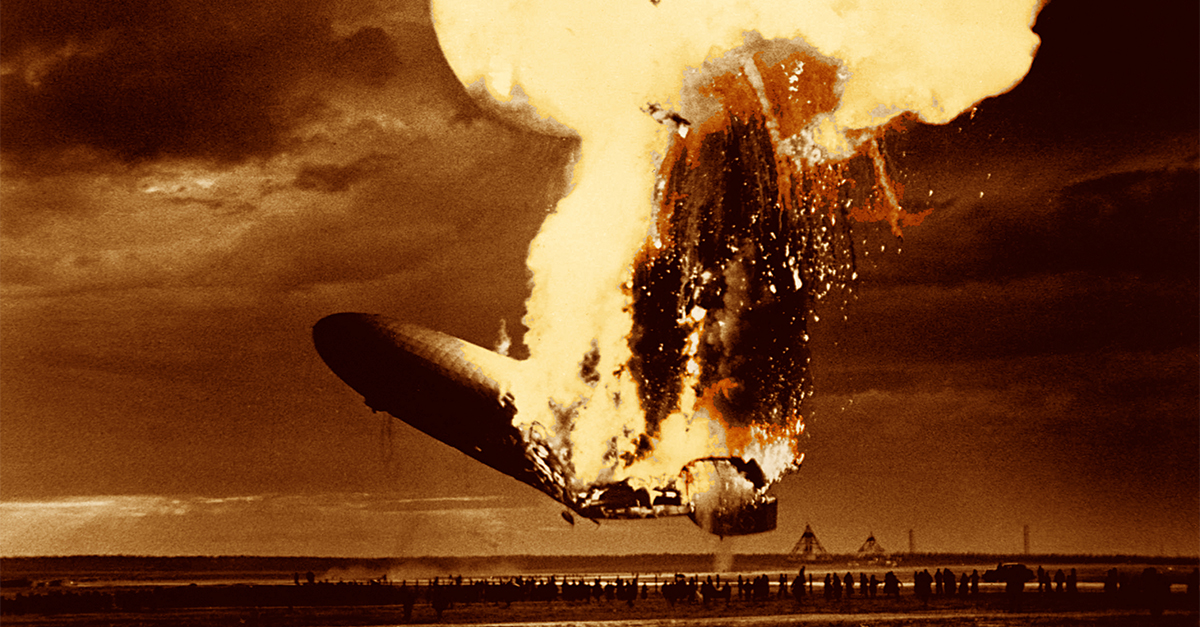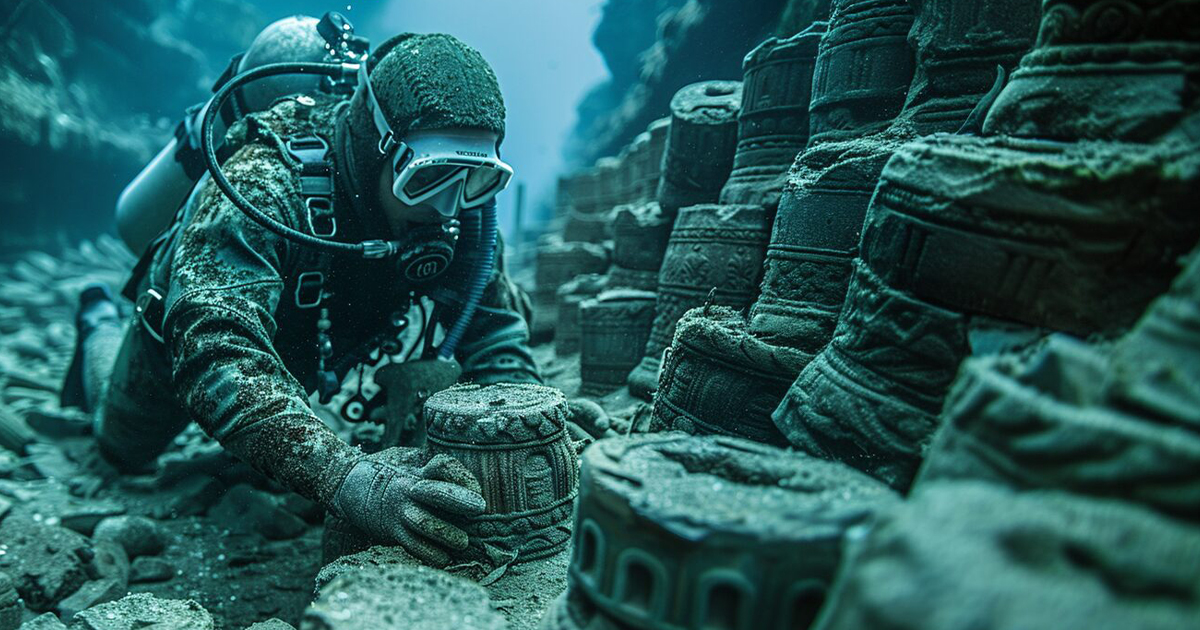It Says…
“At the place where Jesus was crucified, there was a garden, and in the garden a new tomb, in which no one had ever been laid. Because it was the Jewish day of preparation and since the tomb was nearby, they laid Jesus there”.

A Verse Etched In Stone And Soil
The above verses, often read quickly, just got louder—thanks to ancient dirt and diligent hands. A garden beside a tomb sounds poetic, doesn’t it? What has been found is a geographic breadcrumb in Scripture that has led curious minds beneath one of the holiest sites in Christendom.
 Gary Todd from Xinzheng, China, Wikimedia Commons
Gary Todd from Xinzheng, China, Wikimedia Commons
Origins Of The Church Of The Holy Sepulchre
Roman Emperor Constantine I commissioned the Church of the Holy Sepulchre in 335 CE. It was constructed over the sites believed to be Golgotha and Jesus’s tomb. During construction, workers uncovered an ancient tomb, which many identified as the burial place of Jesus based on early Christian tradition.
 Gerd Eichmann, Wikimedia Commons
Gerd Eichmann, Wikimedia Commons
After Years, The Church Needed Fixing
The Church of the Holy Sepulchre, which was constructed in the 4th century, required restoration due to wear. Pavement stones, some from the 19th century and possibly older, had severely deteriorated. Restoration also addressed safety updates like modern plumbing and fire-prevention systems.
Excavation Origins And Oversight
The Church of the Holy Sepulchre excavations were initiated as part of a multi-year, $11 million restoration and conservation project. The Church has undergone numerous reconstructions over the centuries, and this project aimed to refurbish it to ensure structural safety.
 israeltourism from Israel, Wikimedia Commons
israeltourism from Israel, Wikimedia Commons
Custodianship And Restoration Approval
The restoration of the site was a collaborative decision made by the three religious communities that share custodianship: the Greek Orthodox Patriarchate, the Custody of the Holy Land (representing the Roman Catholic Church), and the Armenian Patriarchate. Their joint agreement underscores the site’s deep spiritual significance and…
 Michał Jozefaciuk, Wikimedia Commons
Michał Jozefaciuk, Wikimedia Commons
The Need For Coordinated Stewardship
The project required formal approval from the Israel Antiquities Authority, as any excavation work conducted in Israel, particularly at historically sensitive locations, must comply with strict archaeological oversight. This requirement is in place because Israel has stringent archaeological regulations designed to protect historically significant sites.
 James Emery, Wikimedia Commons
James Emery, Wikimedia Commons
The Religious and Historical Significance Behind The Excavation
The excavation also allowed researchers a rare chance to examine the original stone-cut tomb that many believe to be Jesus’s burial site. This aspect of the project has greatly enhanced scholarly understanding of the site’s architectural and cultural evolution over time.
 Rudolph.a.furtado, Wikimedia Commons
Rudolph.a.furtado, Wikimedia Commons
Restoration Requires Top-Level Experts
Such projects are not typical, so much so that a multidisciplinary team of experts manages the restoration. Only specialists with credentials in archaeology, conservation, and engineering are approved for such a high-profile site. This ensures structural safety and historical accuracy throughout the process.
 Son of Groucho from Scotland, Wikimedia Commons
Son of Groucho from Scotland, Wikimedia Commons
Why These Professionals Are Chosen
Professionals bring targeted expertise in Christian archaeology and religious site conservation. Their qualifications guarantee that restoration respects historical and spiritual layers, as well as modern safety standards, while complying with national preservation laws.
Lead Archeologist Behind The Project
Professor Francesca Romana Stasolla, Full Professor at Sapienza University of Rome, leads the excavation at the Church of the Holy Sepulchre. She specializes in Christian and Medieval Archaeology and brings extensive experience to the project.
Extensive Professional Background
Professor Stasolla has coordinated multiple archaeological excavations in Italy, including sites in Spoleto, Sardinia, and Ravenna. She has authored over 200 scientific works covering topics such as excavation findings, urban development, and Christian burial practices.
Academic And Research Qualifications
They don’t just elect anyone for such big jobs. You must be qualified, and Stasolla is. She has served as coordinator of the PhD School in Archaeology and actively contributes to archaeological journals and societies. Her background in archaeobotany played a key role here.
Key Findings And Their Relevance
While conducting business, the team uncovered artifacts from the Iron Age, including pottery and oil lamps. They also found coins from Emperor Valens (364–378 AD). Then, the olive trees and grapevines became part of the findings. Let’s unpack the Iron Age and coin findings first, then the botanics.
 The British Museum, Emma Traherne, 2013-05-14 14:37:58, Wikimedia Commons
The British Museum, Emma Traherne, 2013-05-14 14:37:58, Wikimedia Commons
How They Dated The Relics And Why They Matter
Charcoal and plant remains helped determine time ranges, while distinct pottery designs aligned with known Iron Age features. Uncovering the coins’s origin was easier, they had the name and titles of the emperor who issued them. The artifacts’s location beneath Roman-era layers further confirmed their age.
 North Lincolnshire Museum, Martin Foreman, 2010-06-21 16:32:57, Wikimedia Commons
North Lincolnshire Museum, Martin Foreman, 2010-06-21 16:32:57, Wikimedia Commons
Olives, Grapes, And Gospel Echoes
The remains of olive trees and grapevines apparently date back approximately 2,000 years. These types of plants were common in the region during Jesus’s time and align with known horticultural practices in first-century Judea. Their presence supports the idea that the area was once cultivated as a garden.
 Israel Parker Israel Preker, Wikimedia Commons
Israel Parker Israel Preker, Wikimedia Commons
What Exactly Did They Find?
While some people might imagine the excavations opening the doors to a living and thriving garden, that was not the case. In reality, archeologists uncovered seeds and pollen from olive trees and grapevines in soil samples beneath the Church of the Holy Sepulchre.
 Judyta Dulnik, Wikimedia Commons
Judyta Dulnik, Wikimedia Commons
Archaeobotanical Findings Match Gospel Description
Archaeobotanical evidence revealed cultivated fields between the area traditionally identified as Calvary and the tomb. These findings directly align with the Gospel of John’s reference to a green space near the crucifixion site. Researchers affirm that the Gospel’s geographic detail reflects firsthand knowledge of Jerusalem’s layout during the first century.
 Anja Mobbauer, Wikimedia Commons
Anja Mobbauer, Wikimedia Commons
They Also Found
Low stone walls that were likely used to separate garden plots. These suggest the site was once cultivated where Jesus lay for three days before he rose. Radiocarbon dating of these stones and seeds is in progress to verify the exact age of the botanical material.
 Pauline Eccles, Wikimedia Commons
Pauline Eccles, Wikimedia Commons
More Than Just Olives And Grapes
Through pollen and seed analysis, archeologists discovered traces of additional cultivated plants beyond olive trees and grapevines. Though the complete list is under review, findings indicate the area once supported a variety of crops. This suggests the site was part of a thriving agricultural landscape during the first century.
 Dartmouth Electron Microscope Facility, Dartmouth College , Wikimedia Commons
Dartmouth Electron Microscope Facility, Dartmouth College , Wikimedia Commons
From Pilgrimage To Proof
Millions have walked the stone floors of the Holy Sepulchre with candles, prayers, and trembling awe. But now, beneath those pilgrim-worn steps lies something more grounded—seeds. Imagine walking unknowingly over the remains of the very garden where sorrow and resurrection collided. That’s history-hugging faith.
 Félix Bonfils, Wikimedia Commons
Félix Bonfils, Wikimedia Commons
Not Just A Garden—A Divine Intersection
This was where death, life, curse, and blessing intersected like threads in eternity. The tomb, carved in stone, untouched and undisturbed, now sits beside evidence of cultivated life. You’re not just hearing the story; you’re seeing it sprout again after thousands of years.
 Berthold Werner, Wikimedia Commons
Berthold Werner, Wikimedia Commons
More Discoveries Beneath The Edicule
Archeologists found a circular marble base beneath the Edicule, the structure protecting the traditional tomb of Jesus. This newly discovered feature is undergoing further study to establish its historical context. The finding adds another layer to the Church’s ongoing archaeological and historical significance.
 MariyaShubina, Wikimedia Commons
MariyaShubina, Wikimedia Commons
Excavations Timed Around Pilgrimage Seasons
Excavations were scheduled to avoid disrupting Easter pilgrimages. The Church of the Holy Sepulchre remains an active religious site, drawing thousands of visitors annually. Archaeological teams coordinated their work to ensure ongoing access for worshipers during the peak pilgrimage period. But….
They Still Faced Challenges During Restoration
The restoration project experienced a two-month pause from October 7 to December 3, 2023, due to the Israel-Hamas conflict. Excavation also proved complex because the church floor contains multiple layers from different eras. Additionally, shared oversight by three Christian denominations requires unanimous decisions, often delaying progress.
Notable Progress
Despite delays, the team uncovered ancient garden evidence—olive tree and grapevine pollen—that supports Gospel accounts. Infrastructure improvements were made, including modern sewage, electrical, and fire-prevention systems. Many are now left wondering, “What more will we find?”















